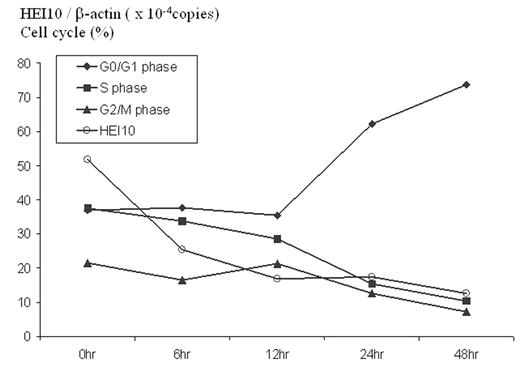Abstract
Background: We previously investigated the gene expression profile of drug-resistant human leukemia K562 cells by the serial analysis of gene expression (SAGE) (
Methods: The quantitative real-time PCR method was employed to estimate the relative gene expression levels of HEI10. Total RNA was extracted from mononuclear cells of bone marrow that had been taken for diagnostic purposes. Patients include acute myeloid leukemia (AML) (n=21) and chronic myeloid leukemia (CML) (n=7; 2 in blastic crisis, 5 in chronic phase). Differentiation of human acute myeloid leukemia cell line HL60 cells was induced by PMA. Human normal CD34+ cells were purified from G-CSF mobilized blood stem cells and were induced to differentiate into erythroid, myeloid or dendritic cells by various cytokines.
Results: Quantitative real-time PCR analysis revealed the high expression of HEI10 gene in patients with leukemia with undifferentiated phenotype (3 cases of AML M1 in FAB classification and 2 cases of CML in blast crisis) and low levels of expression in acute promyelocytic leukemia and CML in chronic phase. When HL60 cells were induced to differentiation with PMA, accumulation in the G0/G1 phase was observed and the expression of HEI10 was decreased. Differentiation of normal CD34+ cells also resulted in a decrease of HEI10 expression.
Conclusions: The expression of HEI10 gene in hematopoietic cells appears to be upregulated when cells are immature. The role for HEI10 in hematopoietic stem cells remains to be elucidated. Biological effects of the HEI10 gene silencing in human hematopoietic cells are currently being investigated by RNAi technology.
Author notes
Corresponding author



This feature is available to Subscribers Only
Sign In or Create an Account Close Modal